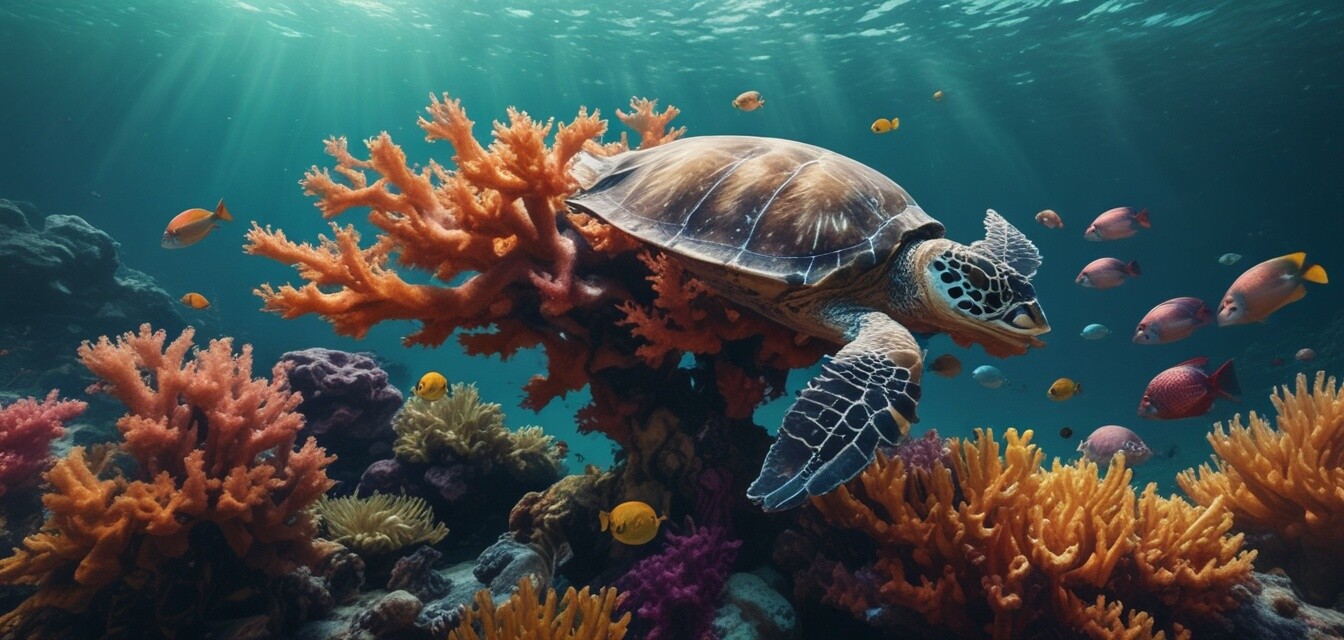
Visual storytelling in underwater photography
Key Takeaways
- Use composition and lighting to convey emotion and narrative.
- Focus on the subject to create a compelling story.
- Incorporate movement and interaction in your shots.
- Experiment with different perspectives to enhance storytelling.
Underwater photography is more than just capturing images; it's about telling a story that resonates with viewers. By mastering the art of visual storytelling, photographers can take their underwater images from ordinary to extraordinary. This guide explores methods to enhance your storytelling techniques in underwater photography.
The importance of visual storytelling
Visual storytelling in underwater photography allows you to connect with your audience on an emotional level. By capturing moments that tell a story, you can engage viewers and transport them beneath the waves. This approach not only enriches the viewing experience but also emphasizes the beauty and fragility of marine life.
Elements of visual storytelling
To effectively tell a story through your underwater photography, focus on these key elements:
- Subject: Your main subject should be clear and compelling, drawing the viewer's attention immediately.
- Composition: Arrange elements within your frame to guide the viewer's eye, using the rule of thirds and leading lines.
- Lighting: Utilize natural light or artificial sources to create mood and highlight certain features in your images.
- Context: Include surrounding elements that provide context, enriching the story being told.
Techniques for effective storytelling
Here are some specific techniques to enhance your visual storytelling in underwater photography:
| Technique | Description |
|---|---|
| Close-ups | Capture intricate details of marine life to highlight their beauty and unique features. |
| Wide shots | Show the expansive underwater landscape, providing a sense of scale and context. |
| Using shadows | Create dramatic effects with shadows, adding depth and interest to your compositions. |
| Incorporating movement | Photograph marine animals in motion to illustrate behavior and interaction with their environment. |
Composition techniques to improve storytelling
Proper composition is crucial in visual storytelling. Here are some tips:
- Use the rule of thirds to place your subject away from the center.
- Frame your subject with natural elements like coral or seaweed.
- Experiment with negative space to emphasize your subject.
- Consider the horizon line and how it affects balance in your images.
Lighting for enhanced storytelling
Lighting significantly impacts the mood and effectiveness of your underwater stories. Here are some ways to utilize light:
- Natural light: Take advantage of sunlight filtering through the water for a soft, ethereal effect.
- Artificial lights: Use underwater strobes or continuous lights to create dynamic contrasts in color.
- Backlighting: Position your light source behind your subject for a dramatic silhouette effect.
Post-processing for storytelling
Editing your images can play a vital role in enhancing your narrative. Here are some post-processing tips:
- Adjust brightness and contrast to make your subject pop.
- Enhance colors to bring out the vibrancy of underwater life.
- Crop images to improve composition and focus on the story.
- Apply minimal filters to maintain the natural beauty of underwater scenes.
Common mistakes to avoid
To ensure your underwater photography tells the right story, be mindful of these common pitfalls:
Pros
- Improved viewer engagement through emotional connection.
- Enhanced composition for more impactful images.
- Creative use of lighting adds depth to underwater scenes.
Cons
- Overcomplicating images with too many elements.
- Neglecting the subject's clarity amidst heavy editing.
- Ignoring underwater conditions affecting visibility.
As you embrace the art of visual storytelling in underwater photography, you can explore techniques and tips to improve your skills further. Consider experimenting with various styles and settings, including utilizing different lighting options and lenses that fit the narratives you want to create.
Conclusion
By incorporating these storytelling techniques and paying attention to key elements, you can create captivating underwater images that resonate with your audience. Remember, every underwater shot has a story to tell; it’s your job to capture and convey that narrative through your lens.
Continue enhancing your skills with our in-depth guides, such as our buying guide section, where you can find gear tailored for underwater photography. Dive deeper into the fascinating world of underwater photography and share your stories with images that inspire!

